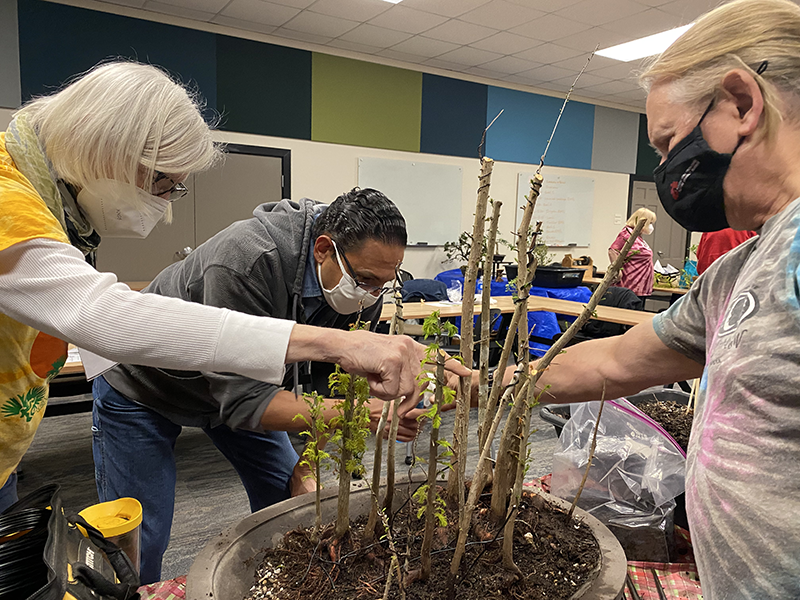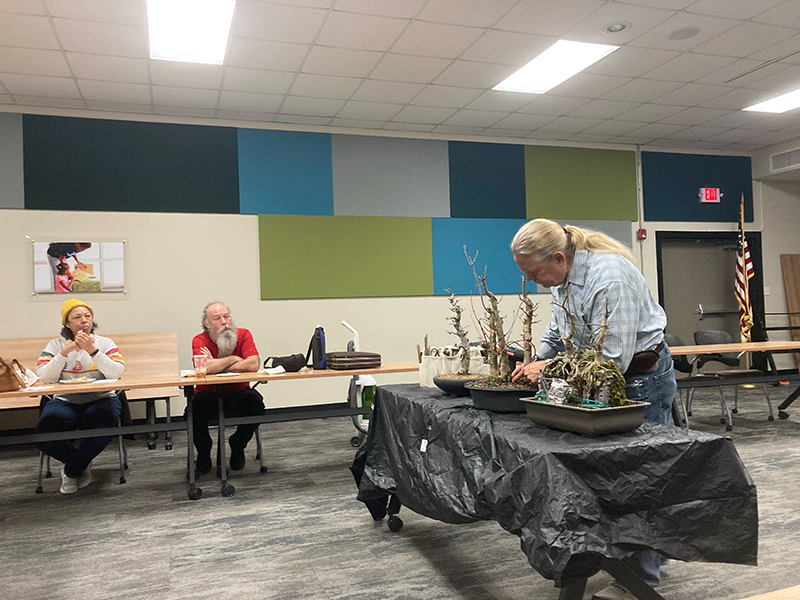Kintsugi
Let’s face it. Who among us has not broken a bonsai pot? I began searching for a way to repair bonsai pots after a large branch fell from a tree cracking one of my favorite large pots. I initially tried super glue, but the results were not as good as I had hoped for. I began searching for another method, and I found Kintsugi.
Kintsugi, I quickly found out, was much more than just a repair method. Kintsugi delves into aesthetics and philosophy. In America, the term is also used in the mental health industry. Like I have found from growing bonsai trees, there are many more levels of art and understanding that far exceed the styling of the tree. I have found this to also be true of Kintsugi.
Origins
A traditional story is kintsugi was created when a 15th Century Japanese shogun sent one of his favorite tea bowls to China to be repaired. When the cup was returned, it was stitched back together with metal staples. The shogun was not pleased with the ugly metal repairs. Japanese artisans began looking for more aesthetically pleasing ways to repair bowls, eventually arriving at the kintsugi technique.
Kintsugi means golden joinery or repairing with gold in Japanese culture. The broken lines on ceramics are repaired by reconnecting the pieces with lacquer or glue. Wet lacquer or glue was later dusted with gold, clearly marking the original breaks. This has the effect of showing the historical use of the ceramic physically on the vessel.
The kintsugi process and other variants were used throughout China, Japan, Korea, Vietnam, and other places.
Most commonly, bowls from the Japanese tea ceremony were repaired using kintsugi.
Philosophy
Wabi-sabi is a Japanese philosophy that may be closely related to kintsugi. Wabi-sabi and kintsugi are similar in that wabi-sabi is about embracing or accepting flawed or less than perfect things. In some Japanese philosophies, signs of use and wear on objects bring more value to the user. Using this philosophy, sometimes objects are kept after they are broken or can no longer be used. Repairing the cracks shows a life event of the object.
The Japanese philosophy of mushin or no-mind is also a part of kintsugi. In mushin, the acceptance of change and fate are accepted as a part of life’s process.
“Not only is there no attempt to hide the damage, but the repair is literally illuminated… a kind of physical expression of the spirit of mushin….Mushin is often literally translated as “no mind,” but carries connotations of fully existing within the moment, of non-attachment, of equanimity amid changing conditions. …The vicissitudes of existence over time, to which all humans are susceptible, could not be clearer than in the breaks, the knocks, and the shattering to which ceramic ware too is subject. This poignancy or aesthetic of existence has been known in Japan as mono no aware, a compassionate sensitivity, or perhaps identification with, [things] outside oneself.”[1]
Kintsugi repairs can be divided into three major types:
- The first of these is the repair of cracks or breaks. The pieces are reassembled with lacquer or glue. Following drying, the repair is painted with extra glue or lacquer. Then gold dust is sprinkled on the repair. The gold is not spread far from the crack, and minor holes are filled.
- The second of these is replacing a missing fragment. The entire space is filled with lacquer or glue and dusted with gold as above. The created piece is smoothed to take the shape of the missing piece.
- The third type is using a fragment from another ceramic to fill in a missing spot. The non-matching piece is ground to the correct size and then attached with lacquer or glue, and the seem is then dusted with gold.










Related techniques
To create a staple repair, small holes are drilled along both sides of the crack. Metal staples are then placed through the holes and bent so they stay in place. This would have a similar appearance to stitches on human skin. The staple repair technique was used worldwide and over a long time, including in ancient Greece, Russia, China, and others to repair valuable ceramics.
DIY Kintsugi (not the traditional Japanese method)
- First, clean all of your ceramic fragments as well as possible. I use Dawn dishwashing soap and warm water to loosen soil and remove stains.
- I then spend some time test fitting the sherds and considering how I am going to reassemble them. The best practice is to rebuild from the bottom up to prevent problems with fit.
- I then use a jewelers file or sandpaper to reduce the edges of the cracks. This has two effects. First, it prevents many accidental cuts, and secondly, it provides more room for the glue and mica (gold) to fit into the cracks. ** Do not breathe in the ceramic dust, or you may damage your lungs. **
- Next, I test fit two pieces and estimate how much glue I will need. The epoxy is two parts, so I spread them out on a scrap piece of cardboard. I lay out a line of mica the same length and mix all three together. I liberally apply the mixture to both sides of the crack. When they are placed together, the gold will ooze from the crack creating the seam of gold.
- After holding the two pieces together for three to five minutes, the two pieces can be held together with scotch tape and placed in a sand bed for support.
- The process can be repeated until the entire ceramic is rejoined. Additional epoxy and mica can be used to fill in depressions and enhance the lines.
- The gold lines can be left raised on made flush by scraping and wet sanding.
[1] Kintsugi – Art of Repair | Traditional Kyoto



